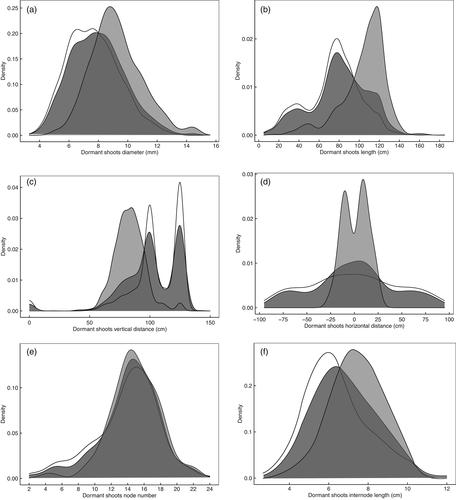The shortage of skilled pruners portends automation as an alternative. To train an Artificial Intelligence (AI) system in cane pruning, the attributes of grapevine dormant shoots were characterised.
Eight attributes of dormant shoots, diameter, length, vertical and horizontal distance, node number, internode length, origin and position relative to bottom fruiting wire, were measured prior to and after pruning. Vine canopies were modified according to a 5 [total node numbers on canes: 10, 20, 30, 40, 50] × 3 [total node numbers on spurs: 1, 2, 3] factorial design. Compared to non-retained dormant shoots, retained dormant shoots were thicker (9.2 ± 0.07 mm), longer (104.7 ± 0.93 cm), close to the vine trunk (11.4 ± 0.65 cm) and below the bottom fruiting wire (83.2 ± 0.54 cm). Spurs had the shortest horizontal (9.8 ± 0.93 cm) and vertical (77.8 ± 0.7 cm) distance, originating from the vine head, base nodes and first nodes of old canes and old spurs. Modifying the vine canopy via increased node numbers had a significant effect on all retained dormant shoot attributes (P < 0.05) except on the position relative to the bottom fruiting wire.
Cane pruning in commercial vineyards is consistent and follows rules based on viticulture knowledge. Retained, non-retained dormant shoots, canes and spurs exhibit distinct attributes useful in quantifying, assessing and modelling cane pruning.
Data and knowledge from the research are currently being used in modelling and training AI cane-pruning algorithms.


